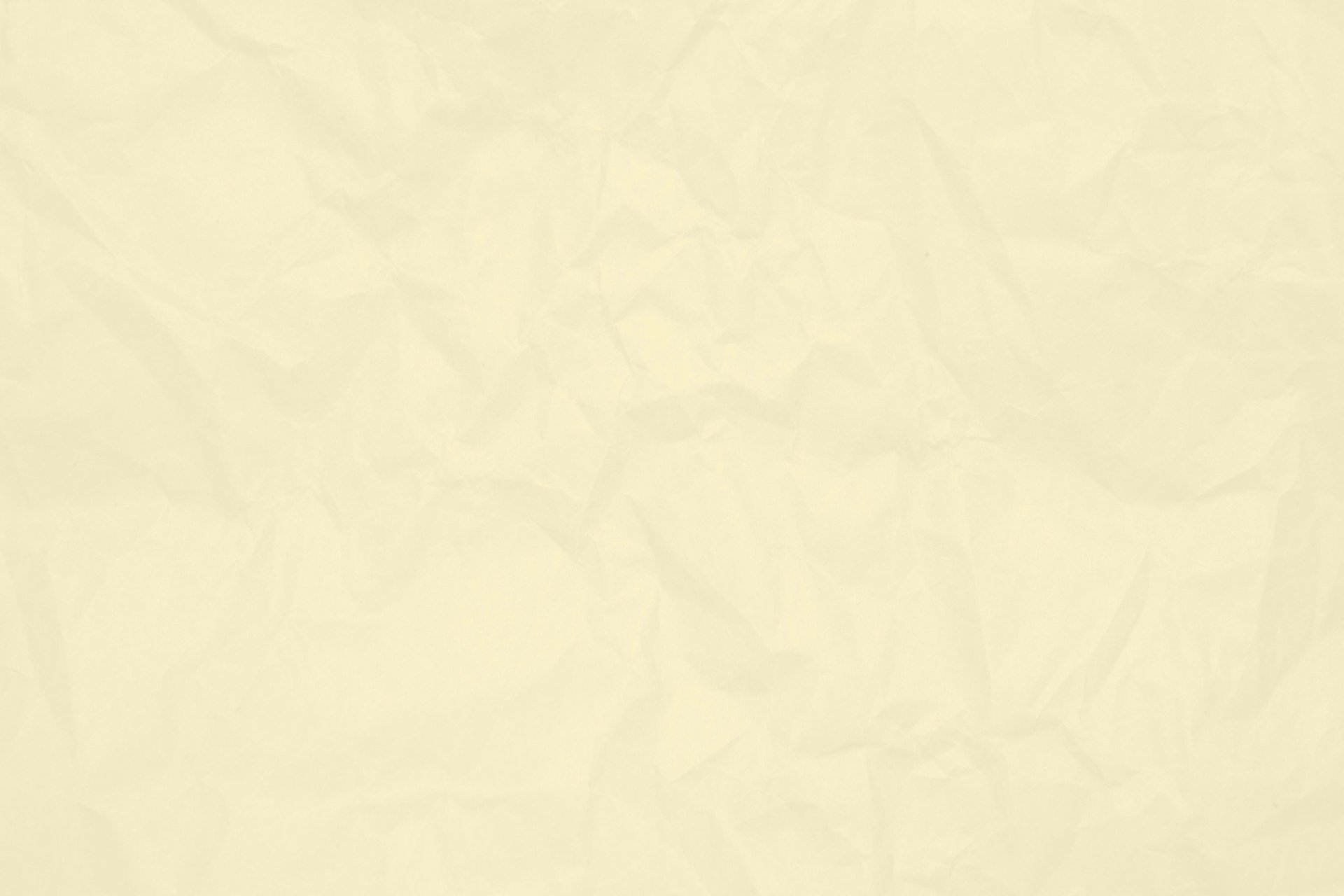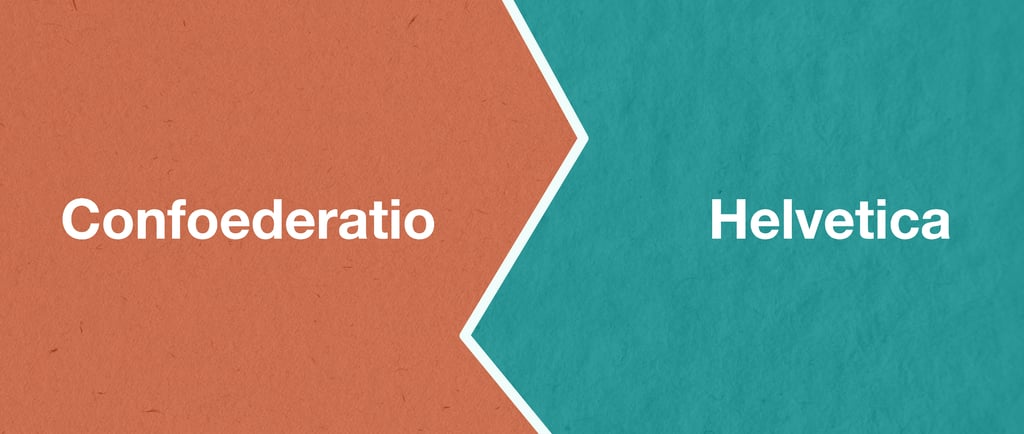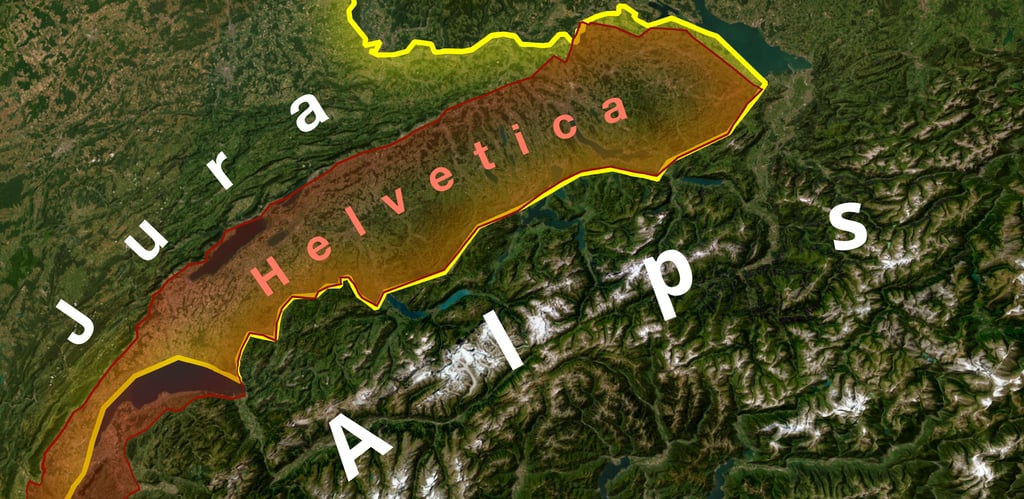
Why CH is the abbreviation for Switzerland?
We explore the real name of Switzerland and make a deep dive into why CH is the abbreviation for the country.



Why does Switzerland use CH as its country code?
Okay, that was easy. Confoederatio Helvetica is the Latin name of Switzerland.
But why? Switzerland is not a Confederation, and what the hell is Helvetica?
And what does this font have to do with it?
To understand, we have to split Confoederatio Helvetica into parts.
Confoederatio and Helvetica.
As I mentioned, Confoederatio is Latin and stands for confederation. It is odd why Switzerland refers to itself as such. We have to first understand what Helvetica is, which is quite often used as a word in Switzerland.
Helvetica
We date the year 100 BC. A Greek philosopher, Poseidonios, mentioned the Helvetii first. A Celtic tribe living on the plateau between the Jura and Alpine Mountains. Today, this is where the majority of the Swiss population stands. It is speculated that they colonized the region back in 300 BC after continuous pressure from Germanic tribes forced them out of what is now Germany.
Julius Caesar devoted an entire campaign against the Helvetii. And in 15 BC the Helvetica became a province of the Roman Empire. This cemented the name Helvetica in the Latin language. For many years, this term stuck.
First, with the terrific success of the canton Schwyz in battle, the words Swiss and Schwyzer became known. Soon, the German-speaking region named all confederates as such.
In 1848, when the modern nation of Switzerland was announced, Switzerland had large portions of Italian, French, and German-speaking populations. Confoederatio Helvetica was chosen to find a name that suited everyone.
Confoederatio
Okay. Now Confederation.
This one puzzled me, and I had to dig deeper. Since Switzerland is a Federation, like the US or Germany.
And there is quite a difference between.
Let's think of a confederation like a group of friends.
Anyone can join a group of friends if the group accepts you. And anyone can leave of their own will.
There might be a guy in the group who provides ideas on where to eat, but ultimately has no authority to decide. The ultimate vote lies within the group.
You may even set up some group chat to speed up decisions. But except that, decision-making is on a point-to-point basis.
The group might mainly focus on group activities and not dedicate one's entire life.
In short, a Confederation is a loose group of states bound by favorable circumstances.
The closest political entity that acts as such would be the EU, but it is still far from a real Confederation.
Otherwise, it might look like a Federation.
Imagine for a moment marrying your crush. Suddenly, you sit next to your mother-in-law and father-in-law at the dining table.
If you decide now to leave the family again, there will be consequences.
Decision-making is no longer in your hands, and you better like the food.
And who could forget sweetheart old granny? Already knowing all your childhood stories from her knitting club.
But at least you get some portion of the inheritance. At least there is a chance.
That's more like a Federation. A constitutional bond of states ruled by a central body.
Back to Switzerland.
Since 1291, Swiss cantons have bound together as a confederation.
Except between 1789 and 1802, when they tried to form a Republic, which ended in a civil war.
Until 1803, when Napoleon was fed up and put them back into a confederation.
Where it all started.
With Napoleon's defeat in 1815, European powers recognized the borders of Switzerland as they are today.
Power began to shift towards a centralized government, and in 1848, the Swiss constitution was enacted. And Switzerland shifted from a confederation to a federation.
Except for the name, where the Confederation sticks to this day.
There we have it!
Confederation from the earliest beginnings of a Swiss state and Helvetica from a prominent Celtic tribe. Results: Confoederatio Helveticain or just CH.
But what is with the Helvetica font?
The font was invented in Switzerland by freelance designer Max Alfons Miedinger in Münchenstein. The spread of Swiss design in the 1950s allowed Helvetica to spread throughout the world and be widely featured in advertisements and corporate logos. Most notoriously, Helvetica is used on signs in the New York subway, and even the font on Mac is heavily inspired by Helvetica.
To this day, it remains one of the best-known fonts in the world.




===== Sources =====
[2] - https://www.swissinfo.ch/eng/culture/exploring-the-celtic-history-of-switzerland/1643716
[3] - https://www.nb.admin.ch/snl/en/home/about-us/pdd/visual-treasures/helvetia.html
[4] -
https://hls-dhs-dss.ch/de/articles/008017/2008-04-08/
[5] - https://www.bk.admin.ch/bk/en/home/dokumentation/Swiss-Confederation-brief-guide.html
[6] - https://www.diffen.com/difference/Confederation_vs_Federation
[7] - https://www.pixartprinting.co.uk/blog/history-font-helvetica/
[9] - https://www.worldhistory.org/uploads/images/15518.png?v=1724792644-1724743182
[10] -
